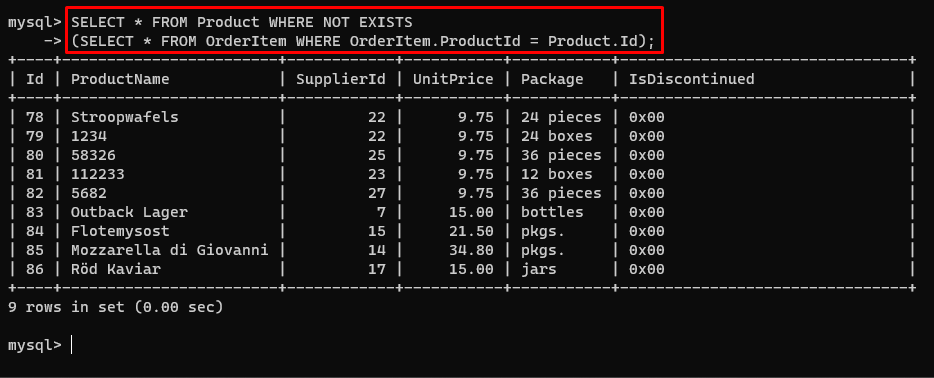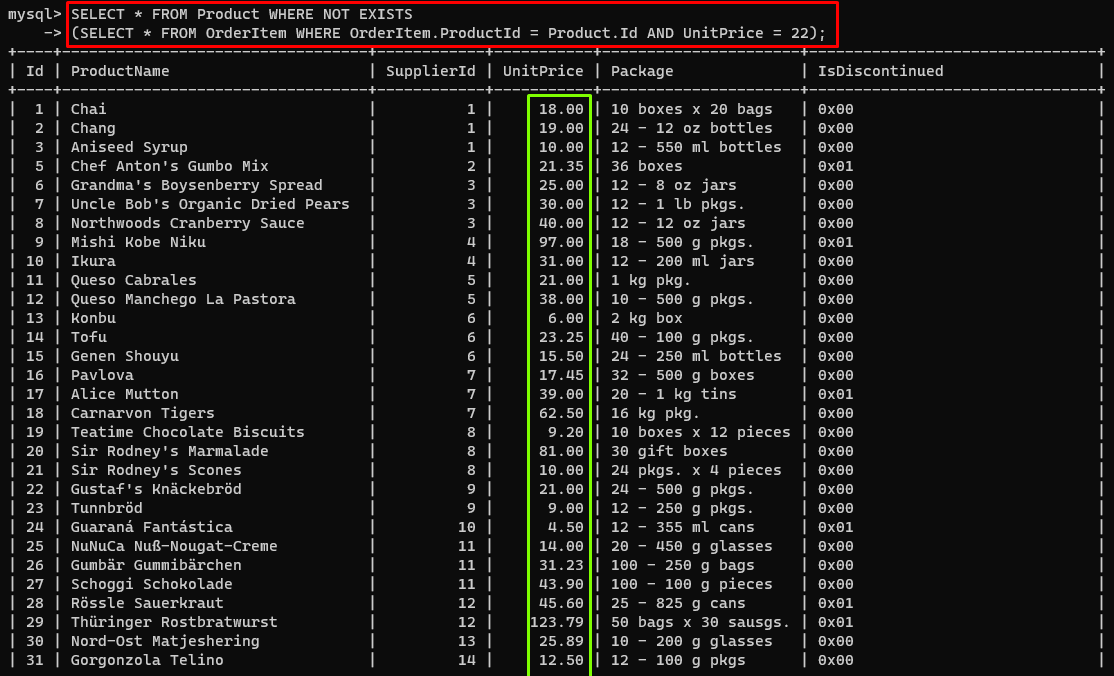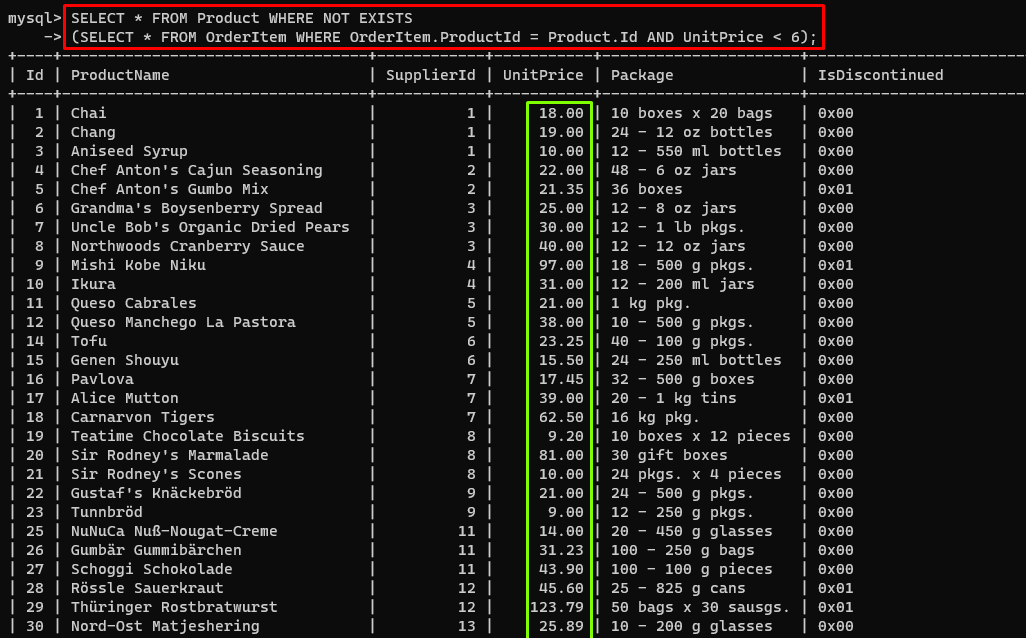This post will discuss the usage of “SELECT * WHERE NOT EXISTS” in MySQL.
How to Use “SELECT * WHERE NOT EXISTS” in MySQL?
Before using the command in question, understand its different sections first. In MySQL:
- The “SELECT” statement retrieves the data
- The “WHERE” clause retrieves the data that matches a certain condition
- The “NOT EXIST” operator in the WHERE clause will exclude the records that match a specific condition
Syntax
To use “SELECT * WHERE NOT EXISTS”, follow the provided syntax:
(SELECT * FROM table2-name WHERE condition);
The “*” represents all columns, and the query inside the brackets is a subquery on the bases of which data will be retrieved from table 1. Here, the “SELECT * WHERE NOT EXISTS” query extracts records from one table, based on excluding the data that match a certain “condition” from the other table.
Method 1: How to Use “SELECT * WHERE NOT EXISTS” With a Simple Subquery?
Let’s see an example to filter data from the “Product” table by excluding records based on a condition that the “ProductId” of the “OrderItem” table is equal to the “Id” of the “Product” table, by running a query:
(SELECT * FROM OrderItem WHERE OrderItem.ProductId = Product.Id);
The output displays the record that doesn’t meet the specified condition as that data is excluded successfully:
Let’s see another example to extract records from the “Supplier” table where the “Id” of this table is not equal to the “SupplierId” of the “Product” table:
(SELECT * FROM Product WHERE Product.SupplierId = Supplier.Id);
Method 2: “SELECT * WHERE NOT EXISTS” With Logical and Relational Operators
The Relational, as well as Logical operators, can be utilized in the conditions with the NOT EXISTS operator to exclude the data based on multiple conditions.
For example, it is required to retrieve the record of the “Product” table by excluding records where the “Id” of this table is equal to the “ProductId” of the “OrderItem” table “AND” the “UnitPrice” is equal to “22”:
(SELECT * FROM OrderItem WHERE OrderItem.ProductId = Product.Id AND UnitPrice = 22);
Let’s see another example if you want to extract the data of the “Product” table by excluding records where the “Id” of this table is equal to the “ProductId” of the “OrderItem” table and the “UnitPrice” is less than “6”:
(SELECT * FROM OrderItem
WHERE OrderItem.ProductId = Product.Id AND UnitPrice < 6);
The output will display, the extracted records after excluding the records specified in condition:
Method 3: How to Use “SELECT * WHERE NOT EXISTS” With “LIMIT” Clause?
The “LIMIT” Clause can be used with the “SELECT * WHERE NOT EXISTS” query to specify the numbers of output for the result. For example, if you want to extract only “7” rows from the table “Product” by excluding the records where the “Id” of this table is equal to “ProductId” of “OrderItem” AND “UnitPrice” is less than “6”:
(SELECT * FROM OrderItem WHERE OrderItem.ProductId = Product.Id AND UnitPrice < 6) limit 7;
In the output, the table will contain 7 rows of the data after excluding the records according to the condition.
Conclusion
In MySQL, The “SELECT * WHERE NOT EXISTS” query extracts the non-existence records based on the specified condition. Moreover, the logical and relational operators and the LIMIT clause can be added to the relevant query. This article demonstrated the usage of the “SELECT * WHERE NOT EXISTS” query in MySQL.





